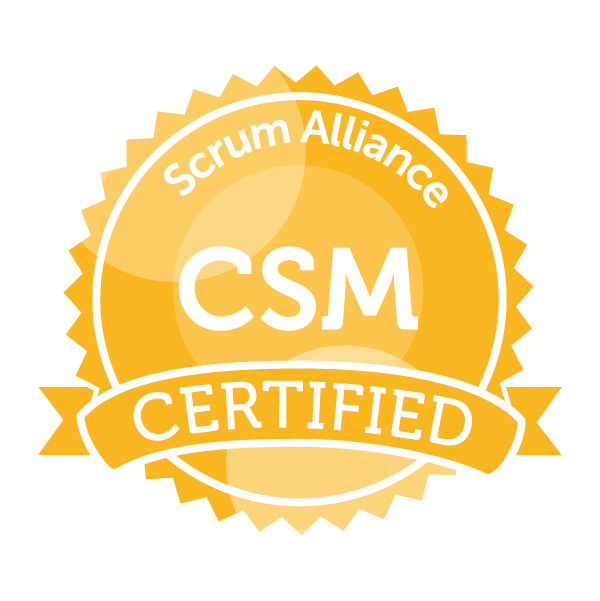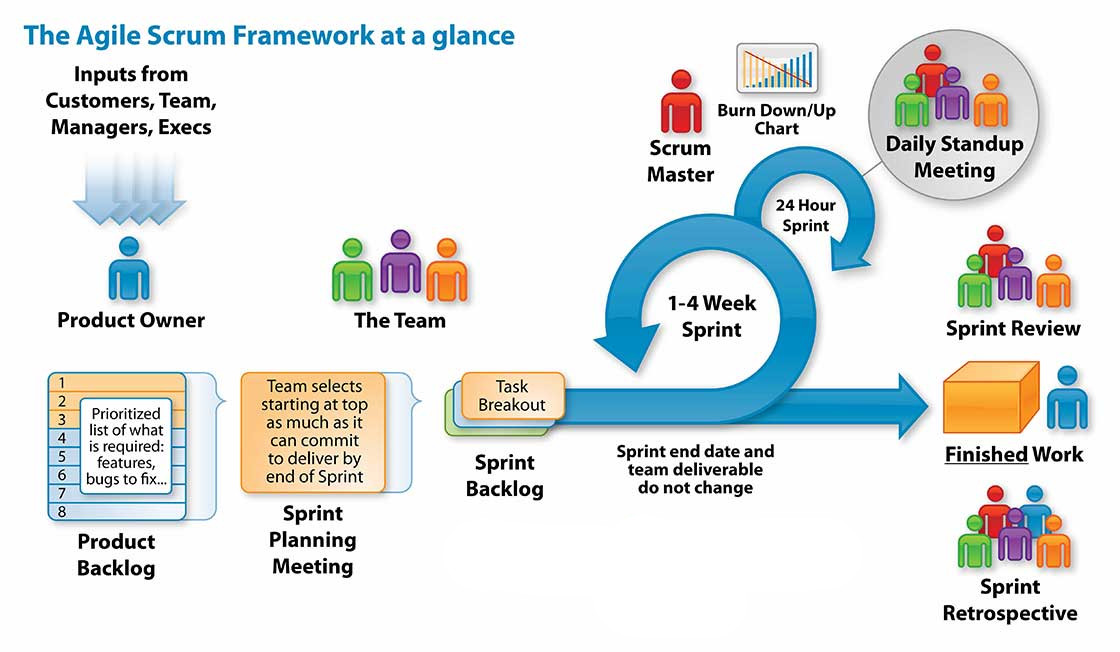
The Scrum Process
Note the Product Owner's interface with external influencers, the Scrum Master, concerned with process, and how the overall nature of the Scrum Framework/Process is itself iterative. The box
of Finished Work refers to meeting the Definition of Done
, the completion of the current Sprint Goal and even working Increment(s) moving towards a multi-sprint Epic completion. See the 2020 Scrum Guide for an expanded treatment of these concepts.
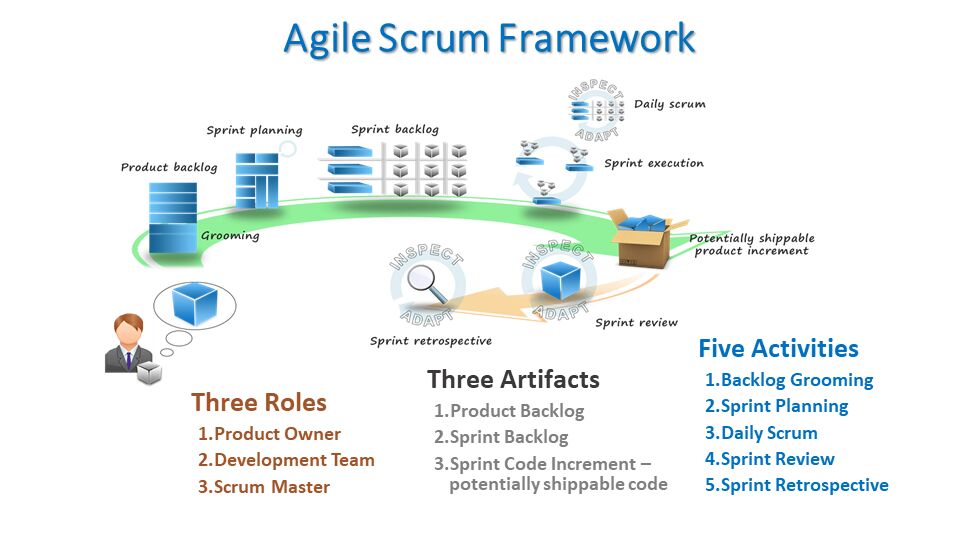
Roles, Artifacts, & Activities
Drilling down, this slide illustrates the three pillars of the Scrum Framework: Scrum Team Member Roles (more granularly defined as Accountabilities), Artifacts (the digital representations of a project's state), and defined Activities that outline common management techniques used to influence, motivate, and facillitate the direction and outcomes of Scrum Teams. In this way, we create a dynamic, self-correcting feedback loop.
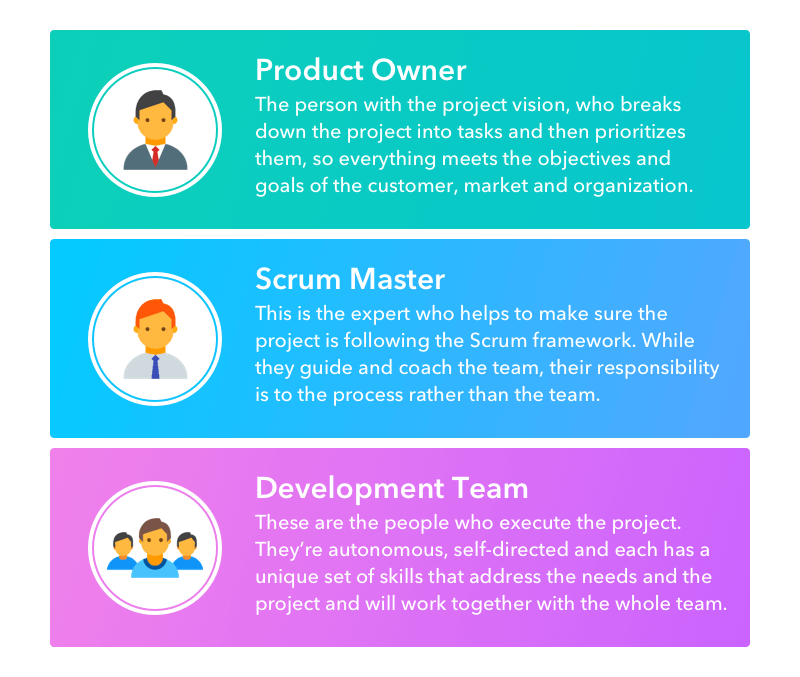
Agile Team Role Overview
A brief summary description comparing Scrum Team Member's accountabilities. The next three cards drill down on how each team member fits within the overall organization, the scrum team, and externals.
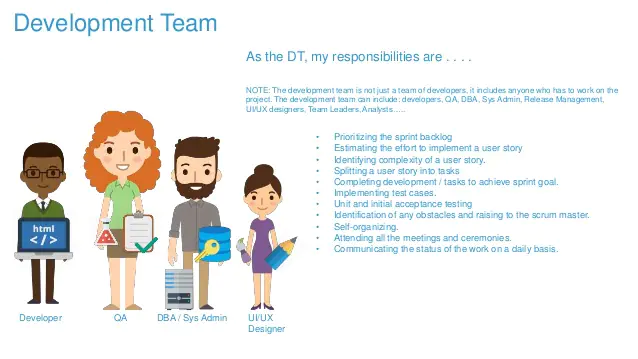
Development Team Accountabilities
Developers are expensive and difficult to retain. Asssuming proper alignment, it's crucial they:
- Be recognized and applauded.
- Allowed to self-organize.
- Shielded from distraction (excessive meetings).
- Be
tooled-up
for efficient development. - Are deployed to achieve Cross-Functionality.
- Provided with time for skill growth training.

The Product Owner's Role
An effective Product Owner is a prerequisite for consistantly achieving Sprint Goals. The P.O. is accountable for maximizing the value of the product outputted by the Scrum Team. This is done by:
- Acting as liason with stakeholders.
- Defining goals to create a vision.
- Prioritizing the Product Backlog.
- Overseeing the development of the product.
- Participating in Scrum Events.
- Evaluating progress at each iteration.

The ScrumMaster
Scrum Masters are concerned with ensuring the Scrum Process is well defined and adhered to. The below summarizes ways this can be achieved:
- Encourage Scrum Team members.
- Facilitate Scrum Events.
- Continually Learn and Knowlege-share.
- Reflect external and internal forces to the Team.
- Recognition-reward performance.
- Protect - maximize time-on-task availability.
Agile Approach
As a proponent of the Agile Framework and Process for Software Development and other technical engineering oriented projects, a key take-away and often overlooked characteristic is the enabling of organizational flexability. Once the Agile Scrum process is deployed and the development and supporting roles are organized into teams, it becomes much easier to react to changing priorities, new competative threats, etc. As the need for change is recognized, personnel skill augmentation through temporary reassignment, supplemental skill contracting, off-shoring, etc. become much sharper and cost effective tools.
Additional Project Management Tools
While the Agile Scrum Framework and tools (Jira, Confluence, etc.) are well developed and popular, additional Software Engineering Management tools that have proven value include:
- MS Project: The old stand-by, typically included in MS Office Suite. Useful for large, long-term Waterfall oriented projects.
- Allstacks: A high level Stakeholder Communication tool.
- Flow: A simplified project management platform.
- GitClear: Integrates with Git to provide coding metrics and review.
- Jellyfish: Integrates with existing management tools to surface insights for engineering leaders.
- Waydev: Codebase analysis and reporting on Pull Requests, CI/CD, ticket activity, et. al.
